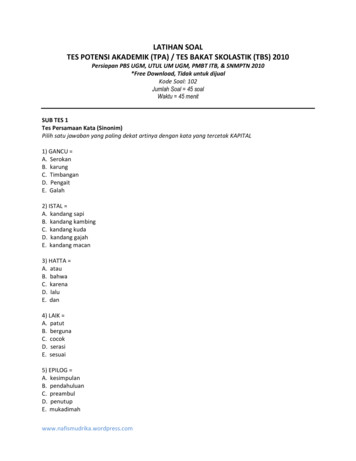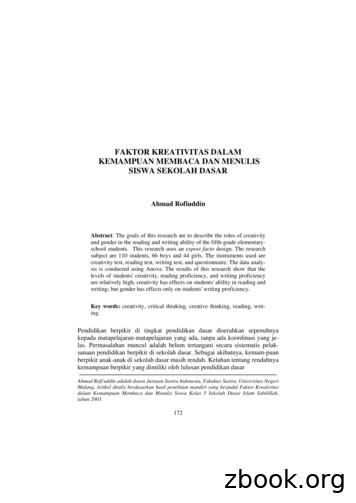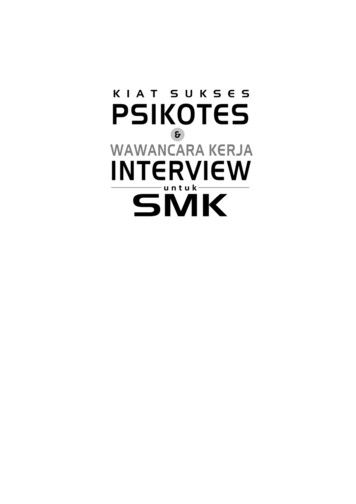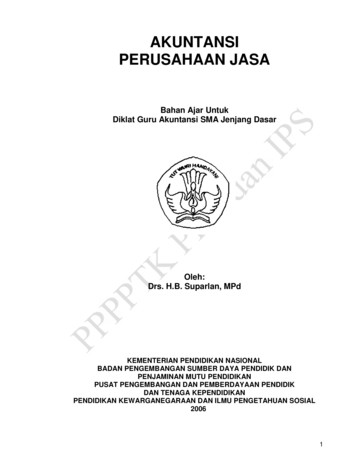TES - Transforaminal Endoscopic Surgery With TESSYS - The Unique All-in .
Fragmentectomy Foraminoplasty Decompression Nucleotomy Annuloplasty Discography TES - Transforaminal Endoscopic Surgery with TESSYS – the Unique All-in-One System
I N T R O D U C T I O N The use of endoscopic surgery on a daily basis began in the 1980’s in the fields of laparoscopy and arthroscopy. In the 1990 s endoscopic / minimally invasive neuro and cardiac surgery followed [1]. Evolution of these technologies has made more delicate and disease-specific applications possible, and as a result endoscopic spine surgery has become a reality. Endoscopic techniques may speed recovery, minimize postoperative pain and improve the final outcome. What once required 3 to 6 months to recover from now only requires 3 to 6 weeks! The Cleveland Clinic Foundation Pioneers in Endoscopic Spinal Column Surgery Minimally invasive spinal column surgery has developed into an alternative and reliable treatment procedure for a range of spinal column disorders. The surgical technique is used especially for discectomy, for treating herniated discs or in order to stabilize unstable spinal column segments. Mixter, Barr [2] and Dandy [3] are known for their work on the diagnosis and treatment of herniated discs and for using laminectomy to expose the lumbar spinal canal. Over the last 40 years, numerous surgeons have sought alternatives to laminectomy and discectomy, such as removal of the nucleus by means of anterior retroperitoneal access [4], automated percutane nucleotomy [5] via suction excision for lumbar herniated discs [6], chemonucleolysis or laser ablation [7, 8, 9, 10, 11]. In the 1970s, Parviz Kambin [12, 13] and Hijikata [14] began performing surgery with cannulae specially designed for the percutane dorsolateral nucleotomy, achieving a documented success rate of 75% with their technique. In the 80s, the principle of mechanical nucleotomy was further advanced by other physicians [15, 16]. Thanks to the combination of a growing body of endoscopic knowledge of the anatomy of the intra- and extraforaminal areas [17, 18], the radiological determination of orientation points for the working zone around the dorsolateral area of the anulus by Kambin [19, 20, 21] and the availability of smaller endoscopes, lateral access became possible. Different types of lateral access have been described by Anthony Yeung [22], Thomas Hoogland [23] and Sang Ho Lee [24], et al. The TESSYS method and joimax technology combines the access methods and techniques applied by multiple users, as published in numerous articles, and has been applied successfully in thousands of procedures. Kambin’s triangle and working zone for the TESSYS access C O N C E P T To remove a herniated disc, the TESSYS method uses a lateral, transforaminal, endoscopic access path, classifiable as a surgical access method that minimizes patient trauma. Sequestered herniated disc tissue is completely and directly removed through the foramen, which is gradually extended with special reamers and instruments, while the patient is in a stable lateral or prone position and responsive throughout surgery under analgesic sedation. The TESSYS surgical method is also performed in hospitals and ambulant surgical centers [25, 26, 27, 28, 29]. 2 Fragmentectomy Foraminoplasty Decompression Nucleotomy Annuloplasty Discography
I N D I C A T I O N The TESSYS method can be used to remove almost all herniated discs and sequesters – irrespective of their position – through the lateral, transforaminal access under analgesic sedation. The TESSYS surgery is indicated for all radicular symptoms caused by herniated discs that were not improved by conservative therapeutical methods. Cauda equina syndrome indicates immediate grounds for surgery. Every surgical procedure on a spinal disc, including the TESSYS surgery, has to be carefully prepared by using Magnetic Resonance Imaging (MRI) and/or computer tomography (CT), as well as multiple conventional x-ray images. X-ray photograph: lateral X-ray photograph: a.p. Intraoperative discography and chromography provide final certainty in definitive determination of the herniated disc position. They are conducted using the needle included in the TESSYS disposable set (see Product Usage Guide page 12-13). MRI: L3-L4 and L4-L5 lateral MRI: L4-L5 lateral MRI: L5-S1 lateral MRI: L5-S1 axial MRI: L4-L5 lateral and axial 44-year-old woman: radicular pain for over 5 months S T A T I S T I C S 100 80 Patient-Rating in % 60 40 20 International medical literature reports a success rate of 7585% [30, 31] for percutaneous nucleotomy. Many centers achieve approximately 90% [32, 33, 34] success rates by using microscopic surgeries for herniated discs. Using the endoscopical TESSYS method for removing herniated disc problems results in a success rate of over 93% [35], as documented in 1-year, 2-year and most recently 3-year studies. The early recurrence rate can be maintained at under 4%. The success rate for patients with recurring herniated disc incidents is over 86% [36, 37, 38]. 0 Very satisfied 1 year after surgery Satisfied 2 years after surgery Dissatisfied Source: See Literature 3 Fragmentectomy Foraminoplasty Decompression Nucleotomy Annuloplasty Discography
S U R G I C A L T E C H N I Q U E As the figure below shows, correct positioning of the patient and careful planning of the main point of access to the herniated disc is crucial for positive surgical results. The combination of the TESSYS method with the TESSYS technology permits access to practically all spinal disc sequestra and herniations, and therefore also allows for their removal along the complete lumbar spine including L5-S1, regardless of their position. This special direct access to the herniated disc occurs through the intervertebral foramen, which contains the nerve roots and may be anatomically narrow. In order to ensure safe ingress into the spinal canal and avoid irritation of the nerves in the foramen, the caudal part of the intervertebral foramen is widened millimeter by millimeter using special reamers (see also Product Usage Guide, starting page 16). Recovery position Prone position 60 30 45 25 - 35 40 - 50 Dorsal view 55 - 65 Lateral view 30 - 40 35 10 -14 cm Skin puncture point 25 10 - 40 Access points must be determined laterally: The access point for L3-L4 is at 8-10 cm (3.153.93 inches), for L4-L5 at 10-12 cm (3.93-4.72 inches) and for L5-S1 at 12-14 cm (4.72-5.51 inches). The figures to the left show the entrance angle from the dorsal, lateral and axial views. Axial view 4 Fragmentectomy Foraminoplasty Decompression Nucleotomy Annuloplasty Discography
R E S U L T S Before the operation: After the operation: 43-year-old man: L3-L4, lateral cranial 49-year-old man: L5-S1, left caudal L4-L5, bilateral view Herniated disc Herniated disc Removal of the prolapse using endoscopic forceps Surgi-MaxTM Trigger-FlexTM Radio frequency probe Exposed nerve root Exposed nerve root from 8 am to 12 pm S. Ruetten: ”Recovery time can be reduced from 49 days to 25 by using endoscopic surgery instead of microsurgery.“ [39] Exposed nerve root 5 Fragmentectomy Foraminoplasty Decompression Nucleotomy Annuloplasty Discography
T E S S Y S A D V A N T A G E S A T A G L A N C E The TESSYS surgical technique enables high-precision treatment to be performed whilst minimizing tissue trauma. This results in minor wound pain and very little scar tissue. In addition, spine stability is unimpaired. Because this technique utilizes analgesic sedation, it is suitable for all age groups and is an outpatient procedure, allowing the patient to leave the hospital on the same day for a faster return to everyday life. Outpatient Treatment – Analgo sedation - Conscious during surgery – Patient’s reaction to possible pain – Well-suited for patients with heart disease and for older patients Minimally invasive access - ”gentle surgery” – 3-level guide wire concept – Gentle tissue dilation – Spine stability remains unimpaired – Minor wound pain and very little scar tissue – Reduced risk of infection Cost savings - solo surgery – Shorter hospital stays [39] – Lower therapy costs T E S S Y S E D U C A T I O N P R O G R A M Dynamic ”3-step concept” to learn the TESSYS surgical technique Training for the surgeon and the surgical team as a whole Cadaver Workshop Step by Step 2 Participation 1 Experience TESSYS live TESSYS Guidelines: Anatomy, Indication and Contraindication, Anesthesiology, Step by Step surgical technique, Instruments Hands-on Anatomical Specimen Training Exchange of experiences Participation in surgical operations at selected training centers Indication related application of all instruments and devices TESSYS Step by Step – Exchange of experiences with surgeons, anesthesiologists and surgical staff as well as patient contact 3 First Surgery Your own patients Ongoing support will be provided by a joimax application specialist and/or a referring physician Guaranteed surgical success and satisfied patients Training for the entire surgical team in the use of the TESSYS technology 6 Fragmentectomy Foraminoplasty Decompression Nucleotomy Annuloplasty Discography
S U R G I C A L T E C H N I Q U E Crown reamer Guiding tube Access to the prolapse is effected via a 3-step guide wire concept (see figure on left). The (soft) tissue is gradually dilated under permanent x-ray monitoring and the foramen stretched step by step using the reamers described. This permits safe, tissue-conserving access to the spinal canal and the prolapse. Guiding rod All TESSYS instruments (guiding rods, guiding tubes, disposable reamers and reamer ejectors) are color-coded in the logical sequence of a traffic light: red-yellow-green. The instruments marked green have the smallest diameter and the red ones the largest. Guide wire Three-step guide wire concept Red: Caution, you are working very close to the nerve! Yellow: Caution, you have approached the nerve! Green: All 0K, you are working at a safe distance from the nerve! Stretching of intervertebral foramen with crown reamer Crown reamer toothing is designed in such a way that soft tissue is not injured during counter-clockwise rotation. As soon as the reamer meets bone, which is easily felt, clockwise rotation is applied to drill the bone. Special attention must be paid to the dosage of the analgesic, especially during the reaming process (patient responsiveness). Once the gradual stretching of the tissue and the foramen is completed, loose tissue and prolapsed material is removed with novel foraminoscopes, under full endoscopic view and with the help of specially designed gripping, cutting and punching forceps. Once all spinal disc fragments are removed, an endoscopic check will be performed to verify that all affected nerve roots are free. In-depth knowledge of the TESSYS surgical method can be acquired in special training programs (see Education Program). For further information, please contact us directly via email, telephone or fax, or contact your local joimax representative. Removal of spinal disc sequester with endoscopic view Colored prolapse tissue (discography/chromography) Spinal disc sequester: 4 cm 7 Fragmentectomy Foraminoplasty Decompression Nucleotomy Annuloplasty Discography
I N S T R U M E N T S The TESSYS System Disposable access set - modular & specific The TESSYS Access Set contains all the products and aids necessary to perform consistent and successful TESSYS surgery: puncture needles (20 G and 27 G), discography needles (18 G and 21 G / 22 G), syringes, preparation bowl, marking pen, scalpel, guide wire, sealing cap and surgical suturing material. Color-coded reamers in a range of sizes TESSYS Disposable Access Sets Color-coded Instruments We offer a range of Access Sets with various types of reamers depending on purpose. We differentiate between fine and coarse crown reamers, which, like the guiding rods and tubes, are also color-coded for easier handling (green 5.0 mm, yellow 6.5 mm and red 7.5 mm). Additional disposable reamers are available separately in undersize 4.0 mm (blue) and oversize 8.5 mm (purple). Instrument Set - high-precision, high durability The TESSYS Instrument Set contains all necessary instruments for secure minimally invasive surgery and for the removal of spinal disc material, plus a range of different gripping, cutting and punching forceps for removing scar tissue and facet joint capsule tissue. joimax Foraminoscope - perfect view All foraminoscopes are available as version C singlecable technology (Combo) or O occular funnel technology (Occular) and have an exterior diameter of 6.3 mm, an optical angle of 30 , and flush and suction channels with an interior diameter of 1.5 mm. Patented LOPS Forceps system Working length: 171 mm, working channel (interior diameter): 3.7 mm Working length: 208 mm, working channel (interior diameter): 3.7 mm TESSYS Instrument Set RF Trigger-Flex Probe The radio-frequency Trigger-Flex probe can be used to stop bleeding and remove scar tissue. Anular ruptures of up to 3 mm are easy to seal by means of tissue shrinking. TESSYS Foraminoscope Laser Sidefire Probe We offer additional disposable material for optimum surgery success, such as the special incision foil for covering the patient. A special tubing set with Y-connectors is available for the joimax low-pressure irrigation pump. Surgi-MaxTM Trigger-FlexTM RF Probes 8 Fragmentectomy Foraminoplasty Decompression Nucleotomy Annuloplasty Discography Patents pending
I N S T R U M E N T S Y S T E M joimax Digital Endoscopic System joimax provides the latest digital technology for endoscopic surgery, particularly for innovative „joined minimal access“ procedures. 6 1 Fully integrated image and video data recording with multi-task navigation Touch-screen monitor, CD/DVD/USB, HDD Speech recognition & audio recording Up to 4 signal sources 1 2 Infinitely adjustable 360 image rotation Zoom and image-centering function Text generator (optional) 2 3 Single-cable technology: light guide and camera in one Miniature camera with integrated optical coupler High-intensity light source with long-life lamp and optimized color temperature 3 4 4 Dual radio frequency system with bipolar disposable probes to arrest bleeding and remove scar tissue Bipolar tweezers 0.5-2.0 mm Trigger-FlexTM endoscopic bipolar disposable probe 5 5 Pressure-controlled arthroscopy and spinal column flush pump (low-pressure) Flush performance: 0-2000ml/min Pressure area: 0-200 mmHg 6 joimax Flatscreen Monitor, HD-ready joimax Flatscreen TFT Monitor, EMC-resistant 1280x1024 dpi (or higher), 16 million colors, 250 cd/m2 High resolution, high refresh rate Completely radiolucent Low-maintenance plastic parts Two-column technique Motor-driven height adjustment Patents pending 9 Fragmentectomy Foraminoplasty Decompression Nucleotomy Annuloplasty Discography
1. Darzi A, Mackay S; Recent advances in minimal access surgery. In: BMJ, Vol 324, pp 31-34, 2002 2. Mixter WJ, Barr JS; Rupture of the intervertebral disc with involvement of the spinal canal. In: N Engl J Med 211, pp 205–210, 1934 3. Dandy WE; Loose cartilage from intervertebral disc simulating tumor of the spinal cord. In: Arch Surg 19, pp 660-672, 1929 4. Hult L; Retroperitoneal disc fenestration in low back pain and sciatica. In: Acta Orthop Scand 20, pp 342-348, 1956 5. Onik G, Helms C, Ginsburg L, et al; Percutaneous lumbar discectomy using a new aspiration probe. In: AJR 144, pp 1137-1140, 1985 6. Kambin P, Sampson S; Posterolateral percutaneous suction-excision of herniated lumbar intervertebral discs, Report of interim results. In: Clin Orthop, Vol 207, pp 37-43, 1986 7. Chiu J, Clifford T; Microdecompressive percutaneous discectomy: Spinal discectomy with new laser thermodiscoplasty for non extruded herniated nucleus pulposus. Surg Technol Int VIII, pp 343-351, 1999 8. Choy DSJ, Case RE, Fielding W; Percutaneous laser nucleolysis of lumbar discs. In: N Engl J Med 317, pp 770-771, 1987 9. Gastambide D; Endoscopic posterolateral foraminotomy with instruments or laser for lateral lumbar stenosis. In: Program Abstract at the 17th Annual Meeting of the International Intradiscal Therapy Society, Munich, 2004 10. Hellinger J; Technical aspects of the percutaneous cervical and lumbar laser-disc-decompression and lasernucleotomy. In: Neurol Res 21, pp 99-102, 1999 11. Knight M et al (eds); Endoscopic Laser Foramninoplasty. A two year follow-up of a prospective study on 200 consecutive patients. Chapter in: Lumbar Spinal Stenosis, Lippincott Williams and Wilkins, Ed. Gunzberg and Spalski, pp 244-254, 1999 12. Kambin P; Arthroscopic microdiscectomy: lumbar and thoracic, in White AH, Schoffermann JA (eds). In: Spine Care St. Louis, Mosby, Vol 2, pp 1002-1016, 1955 13. Kambin P, Gellman H; Percutaneous lateral discectomy of lumbar spine, a preliminary report. In: Clin Orthop, Vol 174, pp 127-132, 1983 14. Hijikata S, Yamagishi M, Nakayama T, et al; Percutaneous nucleotomy. A new treatment method for lumbar disc herniation. In: J Toden Hosp 5, pp 5-13, 1975 15. Onik G, Helms C, Ginsburg L, et al; Percutaneous lumbar discectomy using a new aspiration probe. In: AJR 144, pp 1137-1140, 1985 16. Schreiber A, Suezawa Y, Leu HJ; Does percutaneous nucleotomy with discoscopy replace conventional discectomy? Eight years of experience and results in treatment of herniated lumbar disc. In: Clin Orthop 238, pp 35-42, 1989 17. Hermantin F, Peters T, Quartararo L; A prospective, randomized study comparing the results of open discectomy with those of video-assisted arthroscopic microdiscectomy. In: J Bone Joint Surg (A), Vol 81, pp 958-965, 1999 18. Kambin P; Arthroscopic techniques for spinal surgery, in McGinty JB, Caspari RB, Jackson RW, et al. (eds). In: Operative Arthroscopy, ed 2. Philadelphia, Lippincott-Raven, pp 1207-1235, 1996 19. Kambin P; Posterolateral percutaneous lumbar discectomy and decompression. In: Kambin P (ed) Arthroscopic Microdiscectomy, Minimal Intervention in Spinal Surgery. In: Baltimore, Urban & Schwarzenberg, pp 67-121, 1991 20. Kambin P, Casey K, O'Brien E, et al; Transforaminal arthroscopic decompression of lateral recess stenosis. In: J Neurosurg 84, pp 462-467, 1996 21. Kambin P, O'Brien E, Zhou L; Arthroscopic microdiscectomy and fragmentectomy. In: Clin Orthop 347, pp 150-167, 1998 360 New MISS Implants Neuro Monitoring joimax GmbH An der RaumFabrik 33a, Amalienbadstraße 36 76227 Karlsruhe - Germany PHONE 49 (0) 721 255 14-0 FAX 49 (0) 721 255 14-920 MAIL info@joimax.com NET www.joimax.com joimax , Inc. 275 E. Hacienda Avenue Campbell, CA 95008 USA PHONE FAX MAIL NET 1 408 370 3005 1 408 370 3015 usa@joimax.com www.joimax.com This document contains information protected by copyright and property law and may not be copied in full or in parts thereof or transferred to a further medium in any form. Distribution to third parties is prohibited. joimax , Vitegra , Camsource , TESSYS , iLESSYSTM, CESSYSTM, LegatoTM, ShrillTM and SPOTTM are registered brands of joimax . Other products and names used here may be the registered brands of other companies. Patents are registered. Copyright 2009 joimax GmbH. All rights reserved. CAUTION: U.S. FEDERAL LAW RESTRICTS THIS DEVICE TO SALE BY OR ON THE ORDER OF A PHYSICIAN 22. Yeung A, Tsou P; Posterolateral Endoscopic Excision for Lumbar Disc Herniation. In: Spine, Vol 27, No.7, pp 722-731, 2001 23. Hoogland T, van den Brekel-Dijkstra K, Schubert M, Miklitz B; Endoscopic Transforaminal Discectomy for Recurrent Lumbar Disc Herniation – A Prospective, Cohort Evaluation of 262 Consecutive Cases. In: SPINE Volume 33, Number 9, 2008, pp 973-978 24. Ahn Y, Lee SH, Park WM, et al; Posterolateral percutaneous endoscopic lumbar foraminotomy for L5-S1 foraminal or lateral exit zone stenosis. Technical note. In: J Neurosurg, 99, (Suppl 3), pp 320-323, 2003 25. Levinkopf M, Caspi I et al; Posterolateral Endoscopic Discectomy. In: Program Abstract at the 18th Annual Meeting of the International Intradiscal Therapy Society, San Diego, 2005 26. Iprenburg M; Percutaneous Transforaminal Endoscopic Discectomy; the learning curve to achieve a more than 90% success rate. In: Program Abstract at the 19th Annual Meeting of the International Intradiscal Therapy Society, Phoenix, 2006 27. Alfen FM; Endoscopic Transforaminal Nocleotomy (ETN). In: Program Abstract at the 3rd Dubai Spine Conference, Dubai, 2005 28. Alfen FM, Lauerbach B, Ries W; Developments in the Area of Endoscopic Spine Surgery. In: European Musculoskeletal Review, 2006 29. Krzok G; Early results after posterolateral endoscopic discectomy with thermal annuloplasty. In: Program Abstract at the 17th Annual Meeting of the International Intradiscal Therapy Society, Munich, 2004 30. Kambin P, Gellman H; Percutaneous lateral discectomy of lumbar spine, a preliminary report. In: Clin Orthop, Vol 174, pp 127-132, 1983 31. Leu HJ, Schreiber A; Percutaneous fusion of the lumbar spine, a promising technique. In: Spine State Art Rev 6, pp 593–604, 1992 32. Hermantin F, Peters T, Quartararo L; A prospective, randomized study comparing the results of open discectomy with those of video-assisted arthroscopic microdiscectomy. In: J Bone Joint Surg (A), Vol 81, pp 958-965, 1999 33. Lühmann D, Burkhardt-Hammer T, Borowski C, Raspe H; Minimally invasive surgical procedures for the treatment of lumbar disc herniation. In: DIMDI, German Agency for Health Technology Assessment at the German Institute of Medical Documentation and Information, DAHTA@DIMDI, 2005 34. Mayer H, Brock M; Percutaneous endoscopic discectomy. Surgical technique and preliminary results compared to microsurgical discectomy. In: J Neurosurg, Vol 78, pp 216-225, 1993 35. Schubert M, Hoogland T; Endoscopic Transforaminal Nucleotomy with Foraminoplasty for Lumbar Disc Herniation. In: Oper Orthop Traumatol, 17, pp 641-661, 2005 36. Krzok G; Early results after posterolateral endoscopic discectomy with thermal annuloplasty. In: Program Abstract at the 17th Annual Meeting of the International Intradiscal Therapy Society, Munich, 2004 37. Morgenstern R; Transforaminal Endoscopic Treatment of low Lumbar Scoliosis. In: Program Abstract at the 25th International Society for Minimal Intervention in Spinal Surgery, Zurich, 2007 38. Iprenburg M; Transforaminal Endoscopic Surgery – Technique and Provisional Results in Primary Disc Herniation. In: European Musculoskeletal Review, Issue 2, 2007 39. Ruetten S, Komp M, Merk H, Godolias G; Full-Endoscopic Interlaminar and Transforaminal Lumbar Discectomy vs. Conventional Microsurgical Technique – A Prospective, Randomized, Controlled Study. In: SPINE Volume 33, Number 9, 2008, pp 931-939 joimax TESSYS · 04 2009 · BROTEEN ·Printed on chloride-free bleached paper · Vegetable-based inks were used in the printing process L I T E R A T U R E
Pioneers in Endoscopic Spinal Column Surgery Minimally invasive spinal column surgery has developed into an alternative and reliable treatment procedure for a range of spinal column disorders. The surgical technique is used especially for discectomy, for treating herniated discs or in order to stabilize unstable spinal . Many centers achieve .
Arizona Institute for Minimally Invasive Spine Care Phoenix, AZ Endoscopic spine surgery is evolving rapidly due to improvements in surgical technique, endoscope design, and instrumentation. In an experienced surgeon's hands, the endoscopic foraminal approach can be utilized for most lumbar disc herniations and for the diagnosis and treatment .
LATIHAN SOAL TES POTENSI AKADEMIK (TPA) / TES BAKAT SKOLASTIK (TBS) 2010 Persiapan PBS UGM, UTUL UM UGM, PMBT ITB, & SNMPTN 2010 *Free Download, Tidak untuk dijual Kode Soal: 102 Jumlah Soal 45 soal Waktu 45 menit SUB TES 1 Tes Persamaan Kata (Sinonim) Pilih satu jawaban yang paling dekat artinya dengan kata yang tercetak KAPITAL 1) GANCU
membaca, (3) tes kemampuan menulis, (4) angket untuk guru (dimanfaatkan untuk menjaring data penunjang pelaksanaan pembelajaran membaca, menu-lis, dan berpikir kreatif). Tes berpikir kreatif terdiri atas: tes permulaan kata, tes menyusun kata, membentuk kalimat tiga kata, sifat-sifat yang sama, peng-gunaan luar biasa, dan apa akibatnya. Tes sikap kreatif terdiri ats 30 butir tes benar-salah .
6.2 Wawancara Dalam Psikotes 6.3 Tes Psikologi masuk prajurit TNI 6.3.1 Tes Logika Aritmatika 6.3.2 Tes Logika Penalaran 6.3.3 Tes Analog Verbal 6.3.4 Tes Kraplien/Pauli 117 123 134 137 144 152 16
- Psikotes 8. Tes Kecepatan Hapalan 36 - Psikotes 9. Tes Ketelitian 37 - Psikotes 10. Tes Analogi Verbal 1 38 - Psikotes 11. Tes Analogi Verbal 2 39 - Psikotes 12. Deret Angka 41 - Psikotes 13. Tes Lawan Kata (Antonim) 42 - Psikotes 14. Tes Persamaan Kata (Sinonim) 44 - Psikotes
Plastic surgery Cosmetic Surgery Reconstructive Surgery Aesthetic Surgical & Non-Surgical procedures Craniofacial Surgery Rhinoplasty & Otoplasty Hand Surgery or Chiroplasty Oral and Maxillofacial Surgery Trauma Surgery Skin Rejuvenation and Resurfacing Anesthesia for Plastic Surgery
Tes kelompok : diadministrasikan secara kelompok. Kelebihan dan Keterbatasan Tes Kelebihan Atribut psikologis dalam tes dapat didiskripsikan dengan jelas dan tepat Dalam pendekatan tes, ilmuan dipaksa mengukuti tata pikir dan tata ke
akuntansi perusahaan jasa bahan ajar untuk diklat guru akuntansi sma jenjang dasar oleh: drs. h.b. suparlan, mpd kementerian pendidikan nasional badan pengembangan sumber daya pendidik dan penjaminan mutu pendidikan pusat pengembangan dan pemberdayaan pendidik dan tenaga kependidikan pendidikan kewarganegaraan dan ilmu pengetahuan sosial 2006























